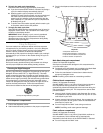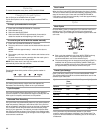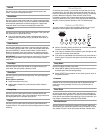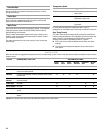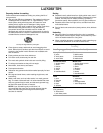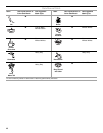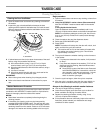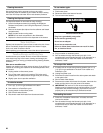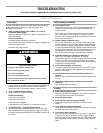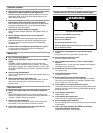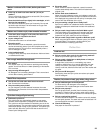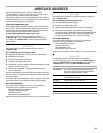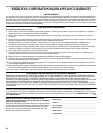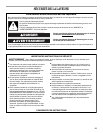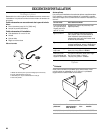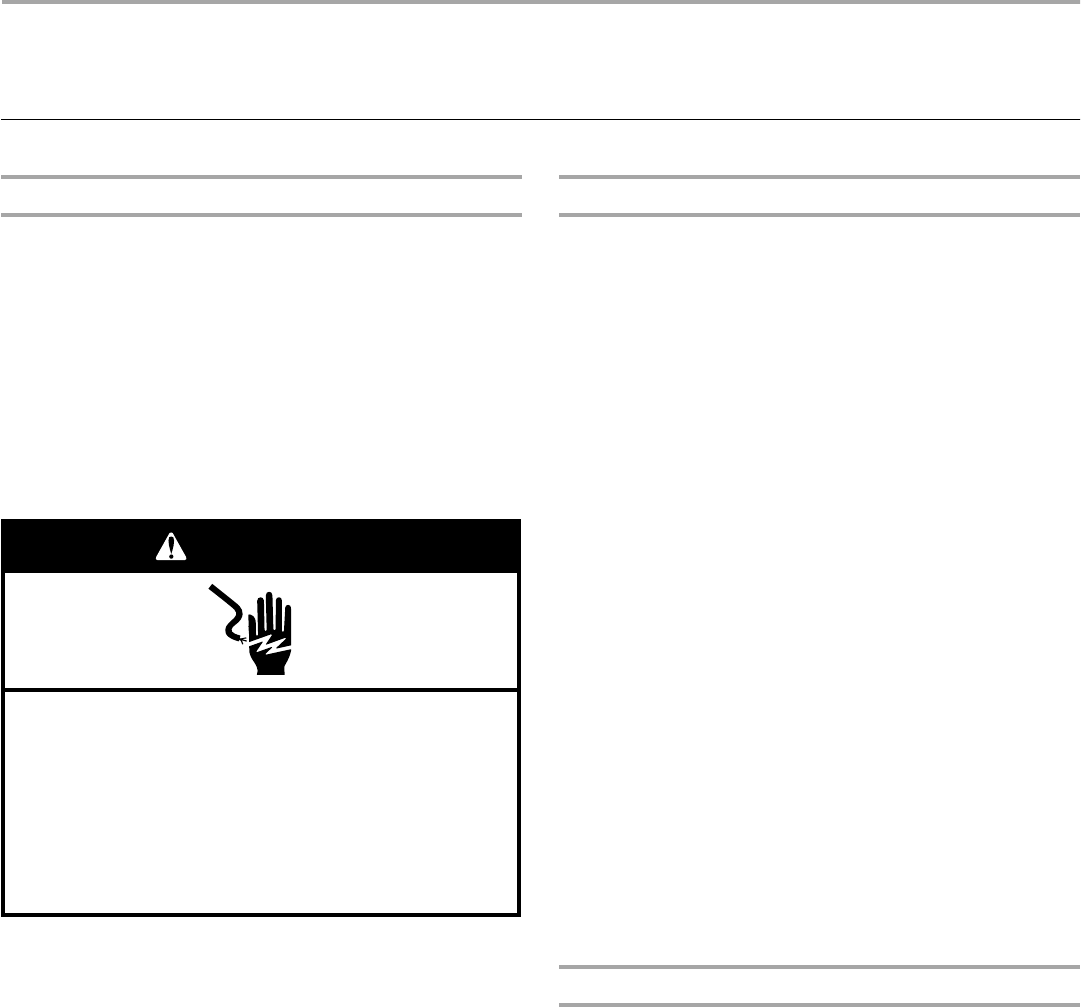
21
TROUBLESHOOTING
First try the solutions suggested here to possibly avoid the cost of a service call...
Washer and Components
Error codes
An error code may be shown in the Estimated Time Remaining
display. Check the list below for potential problem and
troubleshooting checks.
■ “A09” on display (Water Inlet Problem—no water or
insufficient water supply)
If this error occurs, the system will pause. Unplug washer or
disconnect power.
Check the following:
Are water faucets completely turned on?
Are screens at inlet hose connection to washer clogged? Are
water inlet hoses kinked?
Are water inlet hoses frozen?
Plug in washer or reconnect power. Press and hold START to
continue the cycle or press and hold CANCEL/DRAIN to
cancel the cycle. If the problem remains, call for service.
■ “A10” on display (Drain Problem)
Unplug washer or disconnect power.
Check the following:
Is the drain hose kinked?
Is the drain hose frozen?
Is the drain hose clogged?
Is the drain hose more than 55" (1.4 m) above the floor?
■ “F” Variables [F01 - F30] (Electrical Problem)
Switch knob or press and hold START to cancel the cycle.
Select DRAIN/SPIN if there is excessive water in the washer.
Re-select cycle and press START. If the problem remains, call
for service.
Noisy, vibrating, off-balance
■ Is the washer level?
The washer must be level. The four feet should be properly
installed, and the nuts should be tightened against the
washer cabinet.
All four feet of the washer must be in firm contact with the
floor. If the washer is on a pedestal, the washer must be
secured to the pedestal and all four pedestal feet must be in
firm contact with the floor.
■ Washer making a different noise?
As with any new product, you will hear sounds that you are
not accustomed to. You may hear various sounds when the
door is locked or unlocked, and during the washing, rinsing,
or spinning process. Between changes in wash actions, there
will be momentary pauses. You will hear water spraying and
splashing during the wash and rinse cycles. These new
sounds and pauses are part of normal washer operation.
■ Is washer installed on a sturdy and solid floor?
Refer to the “Installation Instructions” for flooring
requirements. Noise and vibration may be reduced by placing
a piece of ¾" (19.1 mm) plywood underneath your washer.
The plywood may extend underneath both washer and dryer
to keep them at equal heights.
■ Is the washer gurgling or humming?
As water is drained from the washer, you may hear air being
pulled through the pump. This happens during the end of
draining. It is normal.
■ Are you washing items with metal snaps, buckles or
zippers?
You may hear metal items touching the washer drum. This is
normal.
■ Were the 4 shipping bolts in the back of the machine
removed?
See “Remove Transport System.”
Leaking
■ Is HE detergent being used?
The non-High Efficiency detergents can cause oversudsing,
which can leak from the rear of the washer.
■ Are the fill hoses tight?
■ Are the fill hose gaskets properly seated?
Check both ends of each hose. See “Connect the Inlet
Hoses.”
■ Is the drain hose properly installed?
The drain hose should be secured to the drainpipe or laundry
tub. See “Secure the Drain Hose.”
■ Is the sink or drain clogged?
Sink and drainpipe must be able to carry away 17 gal. (64 L)
of water per minute. If the sink or drain is clogged or slow,
water can back up out of drainpipe or sink. Check household
plumbing (laundry tubs, faucets, drainpipe, water pipes) for
leaks.
Electrical Shock Hazard
Plug into a grounded 3 prong outlet.
Do not remove ground prong.
Do not use an adapter.
Do not use an extension cord.
Failure to follow these instructions can result in death,
fire, or electrical shock.
WARNING



